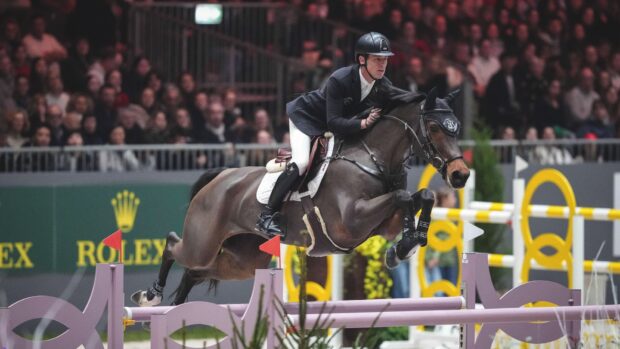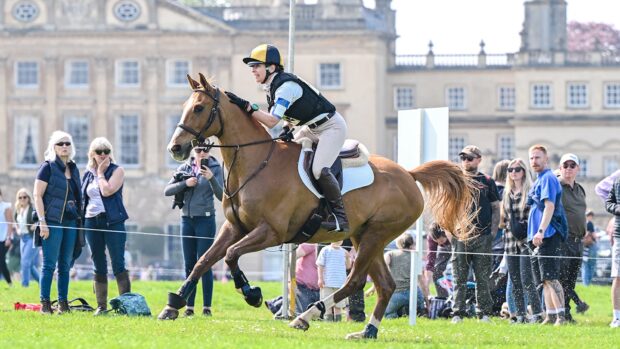Kerry Wainwright of the Skellorn Connemara and Welsh section B stud, who is a leading judge, breeder and competitor, reflects on judging at the Royal Highland Show
THE Horse of the Year Show (HOYS) mountain and moorland (M&M) working hunter pony and junior ridden classes at the 2022 Royal Highland were an absolute joy to judge. The standard of the ponies forward was tremendous, and classes were well supported.
My co-judge Nicola Shuttleworth and I had a mammoth day in the working hunter pony ring, starting at 1.30pm and finishing at 9.30pm. The stewards and course-builder were fantastic to keep everything running smoothly.
The numbers forward certainly buck the trend of 2022, and I wondered if this was due to a superb Graham Barclay-built course or the fact it was the Royal Highland Show. Clearly competitors are still prepared to pay for great service, venue and organisation.
Our winners were lovely and there must be a HOYS winner among those we sent to Birmingham. However, so many other rounds were a bit gung-ho; although it’s a performance class with a course of jumps, I do like to see a rounded pony going in reasonable tack in a controlled manner. Some animals were very hollow through their backs and were being hung onto via some severe concoction in their mouths.
I’ve also noticed a trend of ponies not being shown to breed type. There is a fashion of short manes with long forelocks, coupled with banged-off trails. M&M ponies should be shown in their natural state, with discreet tidying which is perfectly permitted.
While our winners were good representatives of their breeds, I do believe that the working hunter classes are encouraging a sport pony version of each breed. I was left guessing as to what breed some of the ponies were.
Some of my top jump marks came from the over 143cm working hunter class, but we both felt this section had lost breed type the most and many exhibits looked as if they should have been plaited up.
The junior working hunter pony class is a great addition to these classes. It provides a good stepping stone and confidence-giver for our younger riders. But I’m not sure if this class should be included in the championship. After all, the mini ponies don’t contend against the open ponies on the flat, so should the same rule apply for working hunters?
My co-judge rightly removed marks for animals that were over-trimmed and overweight throughout the classes.
Losing breed type
I DON’T think the current height split for M&M working hunter ponies (under 12hh, under 13hh, under 14hh and over 14hh) works. A better split could be under 11.2hh, under 12.2hh, under 13.2hh, under 14hh and over 14hh. While this might need tweaking, it does need looking at.
Welsh section Bs and Cs have an upper height limit of 13.2hh, so the current heights bear no correlation to breed heights. The current split is also encouraging people to breed overheight Connemaras.
Surprisingly, we had very few, if any, Fells, Dales, Highlands, Shetlands and Dartmoors. We need to preserve our breeds, as after all the M&M working hunter pony is a native pony that jumps within its breed ability. There is a vast selection of plaited working hunter pony classes for sports ponies. This begs the question, should there be more marks for breed type?
“A separate class”
JUNIOR ridden were nice, well-filled classes. They’re a great foundation for open classes with some lovely combinations forward.
Marks were deducted from those riders who did not ride the set show correctly, from ponies who didn’t ride straight and those who didn’t go between the hand and the leg. When judging ride, I do just that. I judge the performance within a pony’s breed and leave conformation and breed type to my co-judge.
Nicola and I both felt we should judge the championship as a separate class, and our second-placed large breed was awarded the championship for merely riding the class as we requested, giving a good, controlled extension.
One thing riders should note is the importance of the trot-up. Many walk down and trot back too quickly, unbalancing the pony, before coming to an abrupt halt right near the judge. We’re there to assess conformation, so jockeys should be showing off their animal with a smooth trot past the judge, not rushing to produce a salute at the end.
- This exclusive column will also be available to read in Horse & Hound magazine, on sale Thursday 30 June
You may also be interested in…

How can I make my own working hunter jumps at home?

Working hunter course builder Graham Barclay: ‘I often learn from the riders’

Shetland, 21, bows out after being crowned M&M working hunter pony of the year at HOYS

Subscribe to Horse & Hound magazine today – and enjoy unlimited website access all year round
Horse & Hound magazine, out every Thursday, is packed with all the latest news and reports, as well as interviews, specials, nostalgia, vet and training advice. Find how you can enjoy the magazine delivered to your door every week, plus options to upgrade your subscription to access our online service that brings you breaking news and reports as well as other benefits.




